[Visual History of Korea] Staff Sgt. Reckless -- Korean warhorse celebrated on both sides of the Pacific Ocean
By Korea HeraldPublished : Feb. 19, 2022 - 16:01
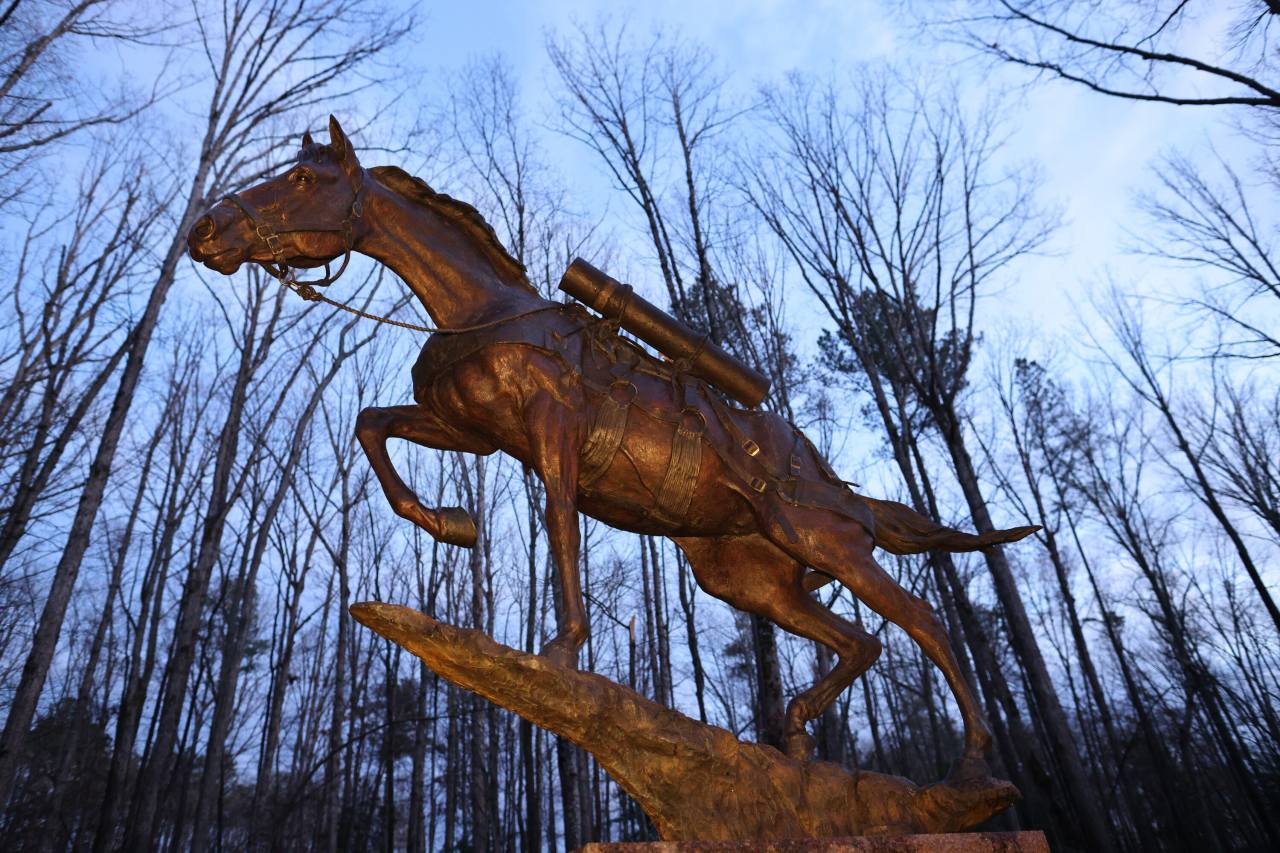
The United States Marine Corps motto “Semper Fidelis,” which means “Always Faithful” does not leave anyone behind on the battlefield.
After fighting in the Korean War, also known as “the Forgotten War,” a Korean warhorse named Reckless was not left behind by the US Marines. When the US 5th Marine Regiment returned to California in 1954 following the July 27, 1953 Korean Armistice Agreement, the horse came with them.
Standing 1.32 meters tall at the withers, Reckless was originally a racehorse named Achimhae, which means flame of the morning.
The Korean sorrel mare breed is better known today as the Hallama breed, a mixed horse between a Korean native Jeju horse and a thoroughbred horse which was introduced to Korea during the Japanese colonial period.
“Achimhae was a race horse that ran at the Seoul Ttukseom Racecourse, and she looks similar in height and weight to a Hallama from Jeju-do. Hallama is a cross between a Jeju mare and a thoroughbred horse. It was bred in Jeju-do during the Japanese colonial period (1910-1945), the liberation period (1945-1950) and through the Korean War (1950-1953),” said Jang Deok-jee, a veterinarian and Jeju horse researcher.
After fighting in the Korean War, also known as “the Forgotten War,” a Korean warhorse named Reckless was not left behind by the US Marines. When the US 5th Marine Regiment returned to California in 1954 following the July 27, 1953 Korean Armistice Agreement, the horse came with them.
Standing 1.32 meters tall at the withers, Reckless was originally a racehorse named Achimhae, which means flame of the morning.
The Korean sorrel mare breed is better known today as the Hallama breed, a mixed horse between a Korean native Jeju horse and a thoroughbred horse which was introduced to Korea during the Japanese colonial period.
“Achimhae was a race horse that ran at the Seoul Ttukseom Racecourse, and she looks similar in height and weight to a Hallama from Jeju-do. Hallama is a cross between a Jeju mare and a thoroughbred horse. It was bred in Jeju-do during the Japanese colonial period (1910-1945), the liberation period (1945-1950) and through the Korean War (1950-1953),” said Jang Deok-jee, a veterinarian and Jeju horse researcher.
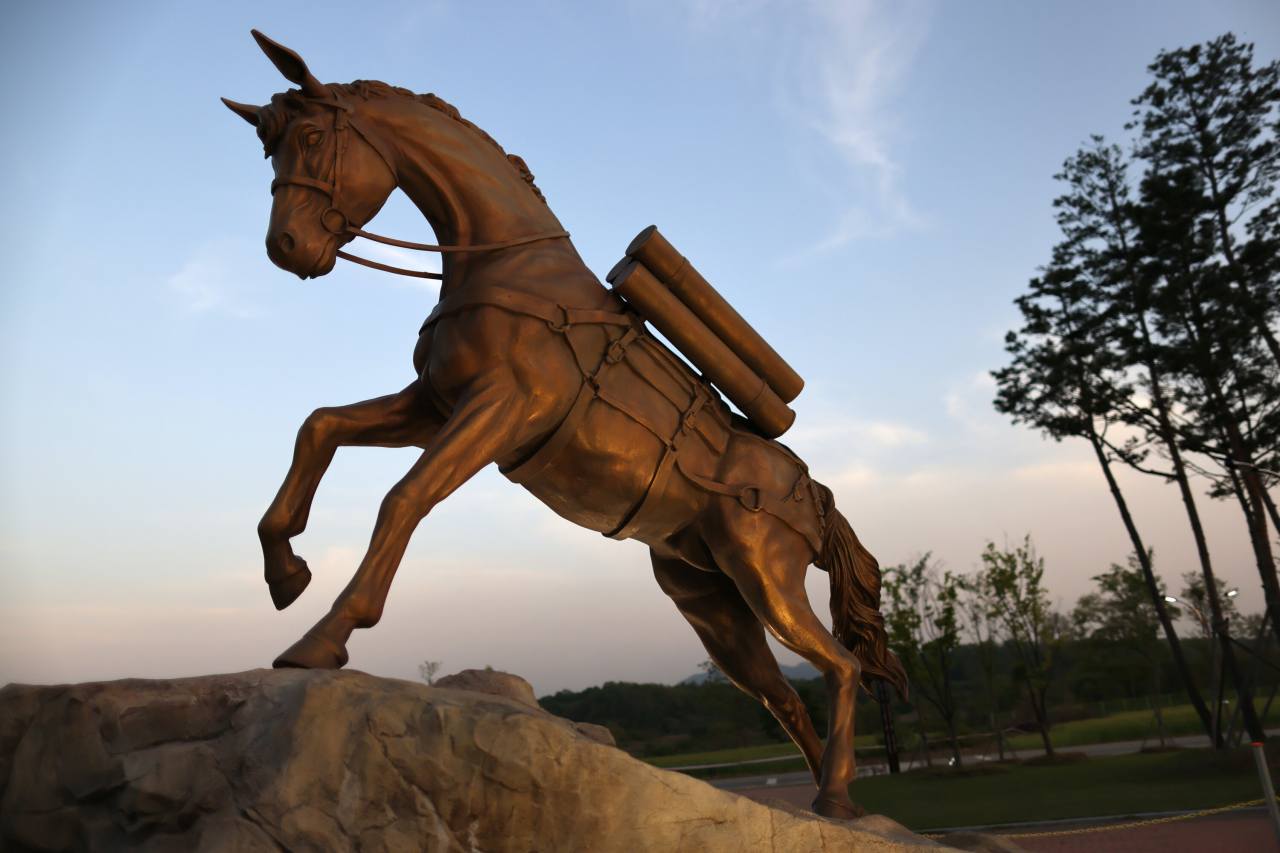
“Achimhae’s red coat is called ‘jeokda’ in the Jeju dialect. The white marking on her head is called ‘ganjeon,‘ which means flowing stars,“ said Jang, a foremost authority on native Jeju horses.
A Hallama is typically a bit taller than the native Jejuma, which stands from about 1.22 meters at the withers. For reference, an average thoroughbred’s height at the withers is around 1.63 meters.
According to US military historians, Reckless was more than just a working animal in the Korean War. She earned her way to becoming a member of the US Marine Corps with her valor serving in actual battles.
The Korean War, which began on June 25, 1950, can be divided into two parts for the American troops as the war went on.
The Incheon landing of the United Nations forces in September 1950 resulted in a decisive victory and strategic reversal in favor of UN forces.
A Hallama is typically a bit taller than the native Jejuma, which stands from about 1.22 meters at the withers. For reference, an average thoroughbred’s height at the withers is around 1.63 meters.
According to US military historians, Reckless was more than just a working animal in the Korean War. She earned her way to becoming a member of the US Marine Corps with her valor serving in actual battles.
The Korean War, which began on June 25, 1950, can be divided into two parts for the American troops as the war went on.
The Incheon landing of the United Nations forces in September 1950 resulted in a decisive victory and strategic reversal in favor of UN forces.
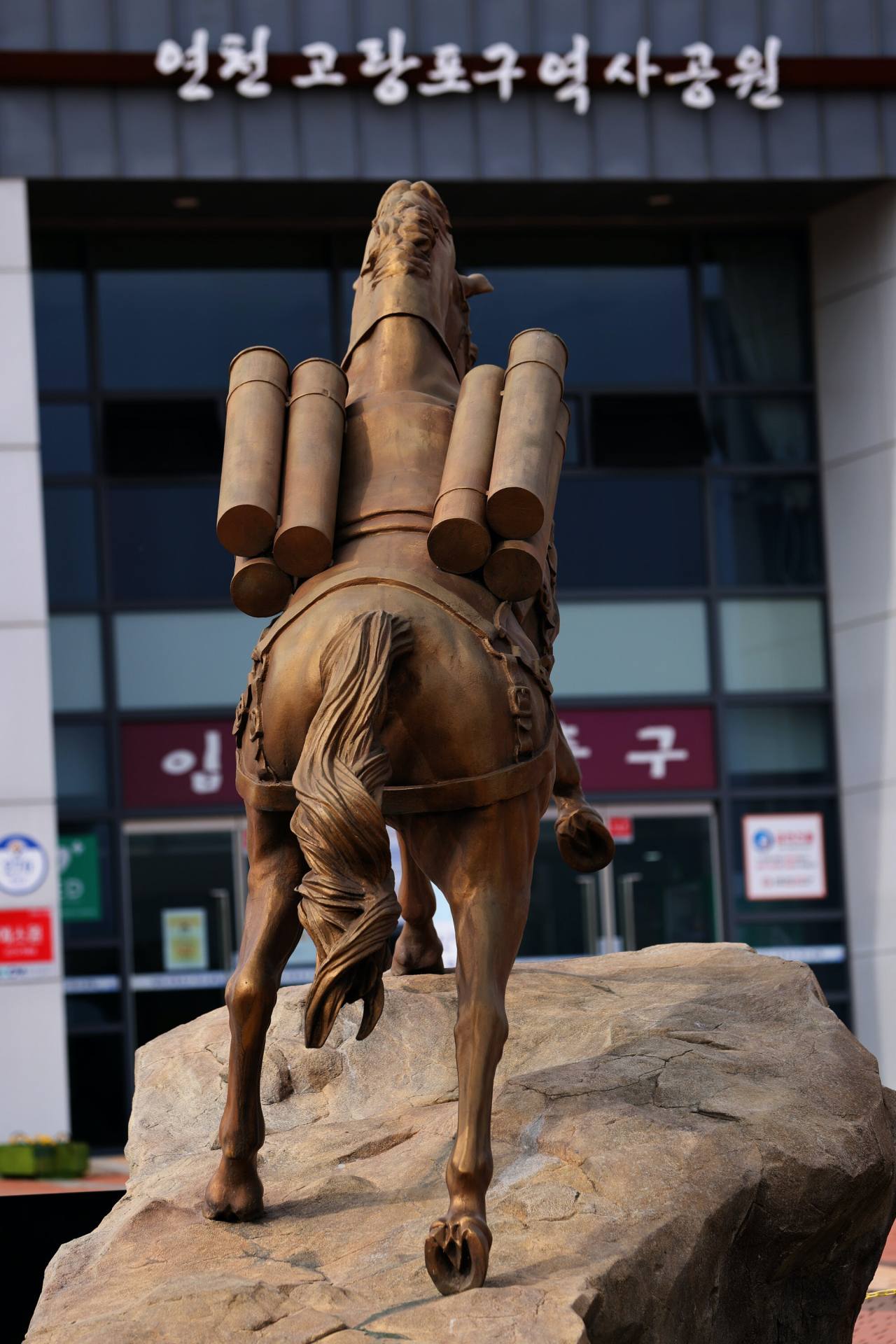
But the sudden and unexpected entry of Chinese Communist Forces on Oct. 19, 1950 dragged the war into an unending “dreary cycle of grinding combat, devoid of operational finesse or popular appeal,” according to documents at the National Museum of the Marine Corps in Triangle, Virginia.
While armistice talks between military commanders from the US, representing the UN Command, the Korean People’s Army and China’s People‘s Volunteer Army were going on, soldiers on both sides were digging in for ongoing skirmishes.
The US Marines had deployed a superior weapon for the ground fight with a 75 mm anti-tank artillery weapon that was powerful enough to knock down enemy huts with a single shot, but required four men to carry.
The 75 mm artillery shells weighed a hefty 10.8 kilograms each. The Marines in charge of carrying the heavy ammunition from the ammunition supply point located 900 meters away were getting exhausted and at danger of becoming enemy targets. They needed a pack horse.
Lt. Eric Pedersen was the leader of the recoilless rifle platoon in the 5th Marine Regiment, whose crew was called the Reckless Riflemen, in reference to the powerful blowback of the 75 mm anti-tank artillery weapon.
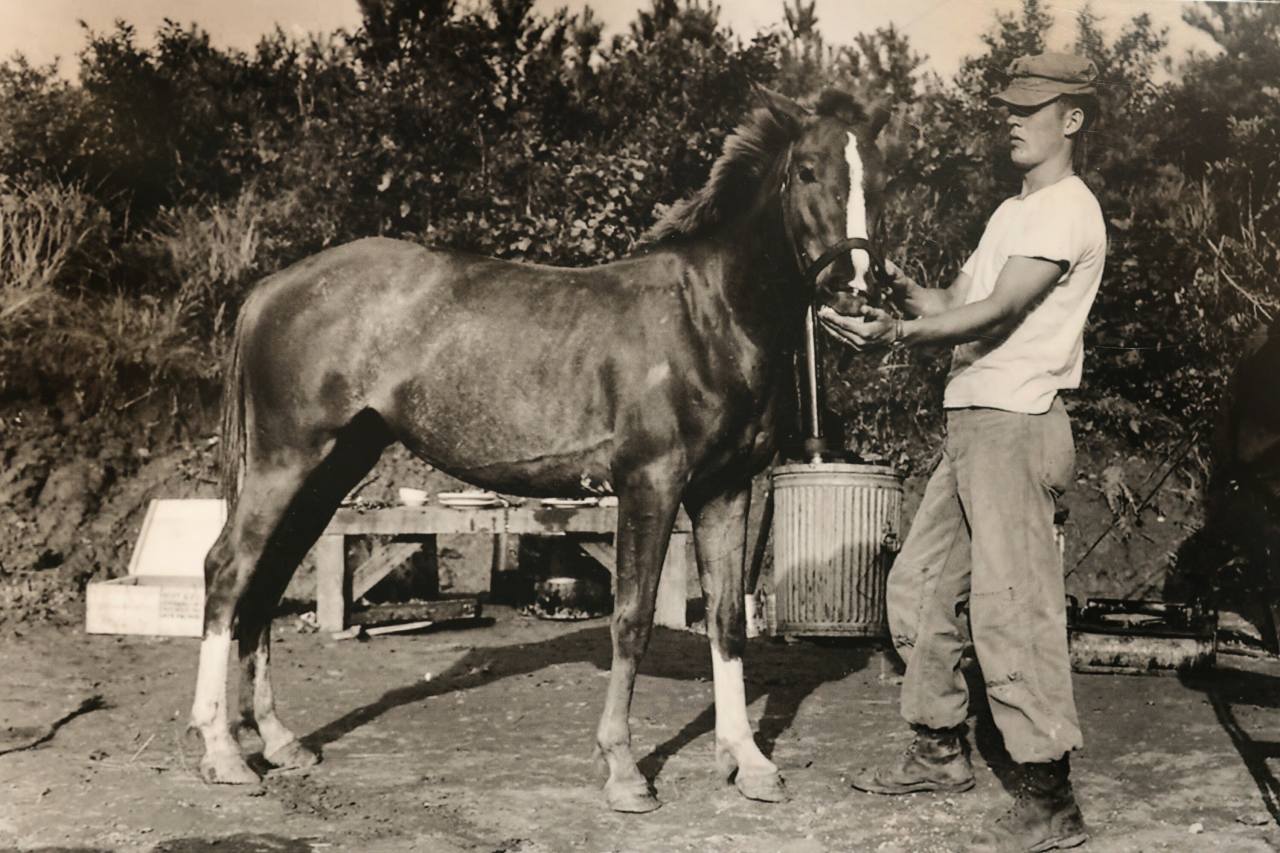
Pedersen was looking to help his Marines carry heavy artillery shells to the firing positions over the rugged mountainous terrain near Yeoncheon County in Gyeonggi Province, where UN forces were holding back Chinese troops from advancing toward Seoul.
Pedersen went to the Seoul Ttukseom Racetrack and bought a Korean sorrel mare -- Achimhae -- for $250 from a boy who needed money to get a prosthetic limb for his sister, who had lost her leg in a landmine explosion.
Achimhae was a hit with the Marines, and was given the nickname Reckless, after Pedersen’s platoon.
They trained Reckless to carry 75 mm ammunition and supplies to frontline firing positions. She was a quick learner and often completed her mission without a handler. The Korean mare became Pvt. Reckless.
In March 1953, the US Marines were engaged in a particularly tough fight known as the Battle for Outpost Vegas in Yeoncheon, about 55 kilometers north of Seoul.
Pedersen went to the Seoul Ttukseom Racetrack and bought a Korean sorrel mare -- Achimhae -- for $250 from a boy who needed money to get a prosthetic limb for his sister, who had lost her leg in a landmine explosion.
Achimhae was a hit with the Marines, and was given the nickname Reckless, after Pedersen’s platoon.
They trained Reckless to carry 75 mm ammunition and supplies to frontline firing positions. She was a quick learner and often completed her mission without a handler. The Korean mare became Pvt. Reckless.
In March 1953, the US Marines were engaged in a particularly tough fight known as the Battle for Outpost Vegas in Yeoncheon, about 55 kilometers north of Seoul.
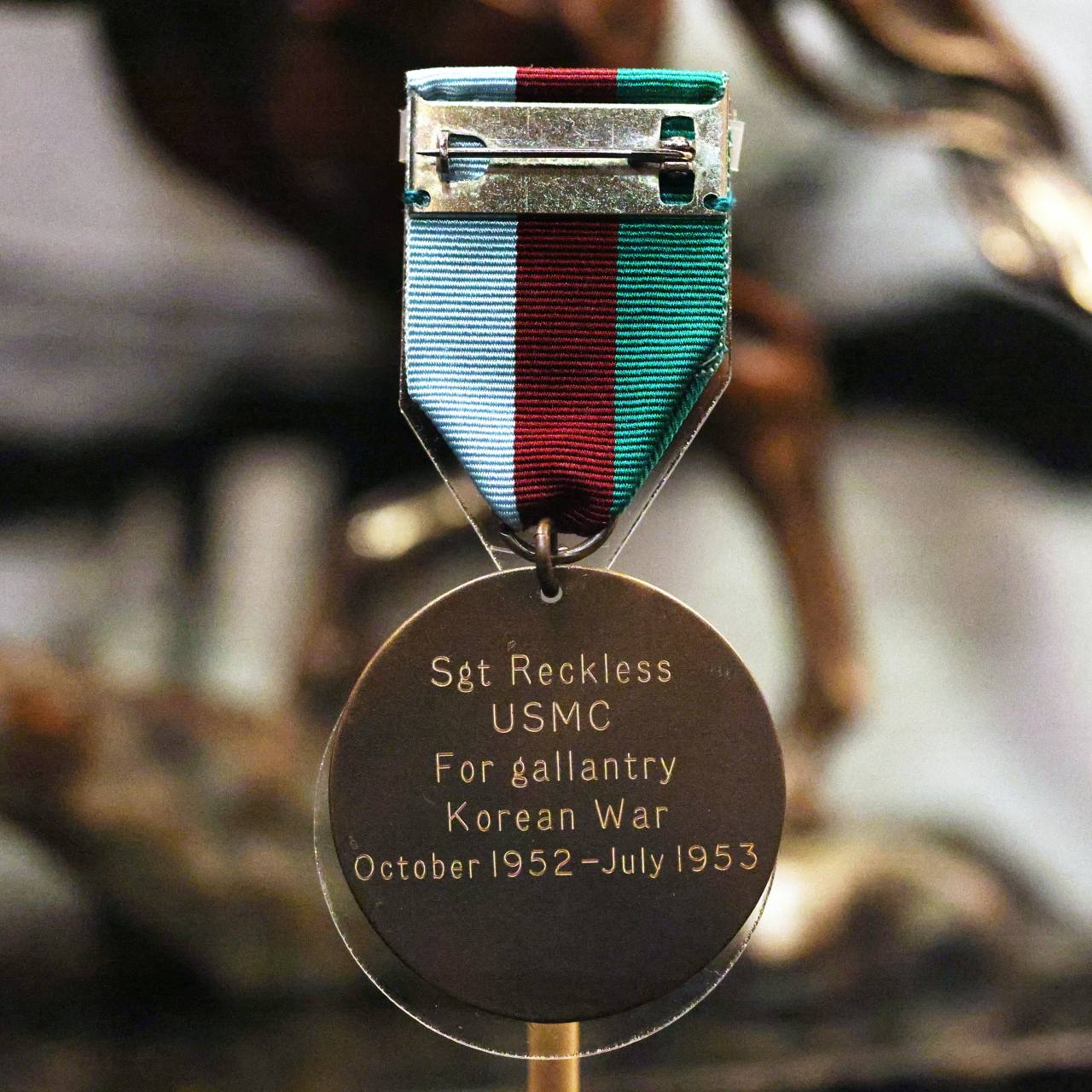
The Americans called the Yeoncheon battle the Nevada Complex, with three hills forming a defense against advancing Chinese troops. The Yeoncheon battle was one of the fiercest fights that held back the enemy for the US Marines.
During a day of that engagement, Reckless made 51 trips from the ammunition supply point to the frontline positions, most of them on her own. She carried over 300 rounds, more than 4082 kilograms, across 50 kilometers of rice paddies and steep mountain trails to her fellow Marines. After offloading her supplies, she carried the wounded back to the aid station. Reckless was wounded twice, but never faltered.
“Reckless was cited for bravery and I had the pleasure of promoting her to the rank of sergeant. In my career I have seen many animals that have been adopted by the Marines, but never in all my experience have I seen one which won the hearts of so many as did this lovely little lady known as Reckless.” Lt. Gen. Randolph McC. Pate, assistant commander of the Marine Corps, is quoted as saying in the 1955 book “Reckless Pride Of The Marines” by Andrew Geer.
Reckless is celebrated both in the US and in Korea.
A statue of Achimhae welcomes guests at the Yeoncheon Gorangpo District Historical Park in Gyeonggi Province.
A statue of Staff Sergeant Reckless, the Korean warhorse, is on prominent display at the Semper Fidelis Memorial Park at the National Museum of the Marine Corps in Triangle, Virginia.
Under the statue of Staff Sergeant Reckless, her list of military decorations are documented: Two Purple Hearts, the Marine Corps Good Conduct Medal, the Presidential Unit Citation with a bronze star, a Navy Unit Commendation, the National Defense Service Medal, the United Nations Korea Medal, a Korean Service Medal with 3 stars, and the Republic of Korea Presidential Unit Citation.
By Hyungwon Kang (hyungwonkang@gmail.com)
---
Korean American photojournalist and columnist Hyungwon Kang is currently documenting Korean history and culture in images and words for future generations. -- Ed.
During a day of that engagement, Reckless made 51 trips from the ammunition supply point to the frontline positions, most of them on her own. She carried over 300 rounds, more than 4082 kilograms, across 50 kilometers of rice paddies and steep mountain trails to her fellow Marines. After offloading her supplies, she carried the wounded back to the aid station. Reckless was wounded twice, but never faltered.
“Reckless was cited for bravery and I had the pleasure of promoting her to the rank of sergeant. In my career I have seen many animals that have been adopted by the Marines, but never in all my experience have I seen one which won the hearts of so many as did this lovely little lady known as Reckless.” Lt. Gen. Randolph McC. Pate, assistant commander of the Marine Corps, is quoted as saying in the 1955 book “Reckless Pride Of The Marines” by Andrew Geer.
Reckless is celebrated both in the US and in Korea.
A statue of Achimhae welcomes guests at the Yeoncheon Gorangpo District Historical Park in Gyeonggi Province.
A statue of Staff Sergeant Reckless, the Korean warhorse, is on prominent display at the Semper Fidelis Memorial Park at the National Museum of the Marine Corps in Triangle, Virginia.
Under the statue of Staff Sergeant Reckless, her list of military decorations are documented: Two Purple Hearts, the Marine Corps Good Conduct Medal, the Presidential Unit Citation with a bronze star, a Navy Unit Commendation, the National Defense Service Medal, the United Nations Korea Medal, a Korean Service Medal with 3 stars, and the Republic of Korea Presidential Unit Citation.
By Hyungwon Kang (hyungwonkang@gmail.com)
---
Korean American photojournalist and columnist Hyungwon Kang is currently documenting Korean history and culture in images and words for future generations. -- Ed.
-
Articles by Korea Herald








![[Graphic News] More Koreans say they plan long-distance trips this year](http://res.heraldm.com/phpwas/restmb_idxmake.php?idx=644&simg=/content/image/2024/04/17/20240417050828_0.gif&u=)
![[KH Explains] Hyundai's full hybrid edge to pay off amid slow transition to pure EVs](http://res.heraldm.com/phpwas/restmb_idxmake.php?idx=644&simg=/content/image/2024/04/18/20240418050645_0.jpg&u=20240419100350)






![[From the Scene] Monks, Buddhists hail return of remains of Buddhas](http://res.heraldm.com/phpwas/restmb_idxmake.php?idx=652&simg=/content/image/2024/04/19/20240419050617_0.jpg&u=20240419175937)

![[KH Explains] Hyundai's full hybrid edge to pay off amid slow transition to pure EVs](http://res.heraldm.com/phpwas/restmb_idxmake.php?idx=652&simg=/content/image/2024/04/18/20240418050645_0.jpg&u=20240419100350)

![[Today’s K-pop] Illit drops debut single remix](http://res.heraldm.com/phpwas/restmb_idxmake.php?idx=642&simg=/content/image/2024/04/19/20240419050612_0.jpg&u=)